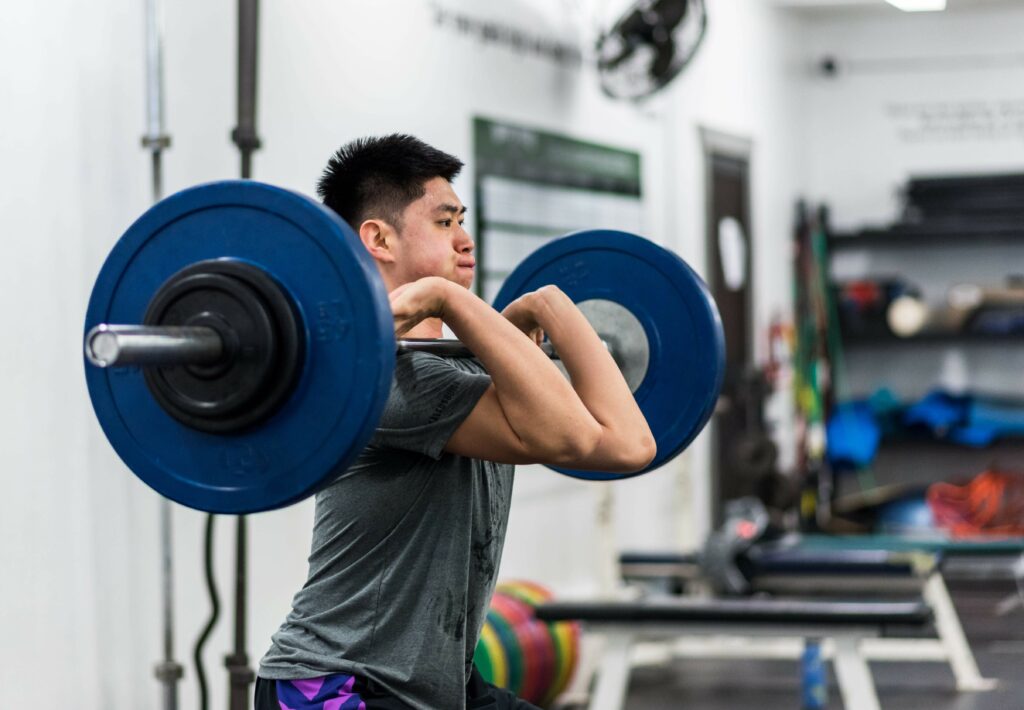
In the realm of strength and conditioning, muscle growth has long been associated with increased strength. However, certain sports and fitness pursuits prioritize functional power over bulk. For athletes in sports like soccer, boxing, and combat sports, excess weight can hinder performance or lead to strict weight category restrictions. Even in the fitness world, the misconception persists that lifting weights equates to a bulky physique.
At Saltus Performance, we understand the desire to enhance strength without significant muscle size gains. In this blog, we will explore effective training approaches and strategies to help you develop functional power while maintaining a lean, athletic physique.
1. Sport-Specific Training

When aiming to build strength without excessive muscle growth, it’s crucial to tailor your training to the demands of your sport or fitness goals. Focus on exercises and movements that mimic the specific requirements of your activity. For soccer players, incorporating agility drills, speed work, and endurance training alongside targeted strength exercises can enhance performance without adding unwanted bulk. Similarly, boxing and combat sports athletes can prioritize technical skill development, speed, and power through sport-specific drills while minimizing muscle hypertrophy.
2. Implement Dynamic Warm-Ups

Typically, these are two different focus points, but often linked together. Power is a vital component to many sports and fitness activities. Prioritise movements that challenge your ability to generate as much force in a short time frame and then build up to repeating these for a number of reps in a row (often between 2-8). Plyometric movements like jump squats, medicine ball throws, and kettlebell swings can improve power output and neuromuscular coordination while minimizing hypertrophy. This approach allows you to develop functional strength and power while maintaining a leaner physique.
3. Focus on Strength-to-Weight Ratio
Rather than solely increasing maximal strength, emphasize improving your strength-to-weight ratio. This approach involves increasing your strength relative to your body weight without excessive muscle growth. By incorporating low rep and high load exercises, and manipulating leverage and tension through variations in exercise techniques, you can build functional strength while controlling muscle size.
4. Focus on Neural Adaptations
Strength gains often result from improvements in neural adaptations, such as increased motor unit recruitment and enhanced coordination. To maximize these adaptations, prioritize activities that emphasize neurological efficiency, such as practicing complex movements, honing proper form, and refining technique. This approach allows you to enhance strength without excessive muscular hypertrophy.
5. Conditioning

This may involve engaging in steady-state cardio exercises such as running on a treadmill or outdoors, as well as participating in tempo workouts designed to target your maximum aerobic speed (MAS) or repeated sprints. Additionally, high-intensity interval training (HIIT) has gained popularity in recent years, as it can improve strength and power while limiting muscle hypertrophy. Including HIIT sessions in your training regimen can be a valuable addition.
Building strength without significant muscle size gains is not only possible but also desirable for many individuals. By adopting a targeted approach that incorporates resistance training, HIIT, plyometrics, and neural adaptations, you can unlock functional power and cultivate a lean, strong, and athletic physique that aligns with your goals and preferences.
If you have any questions or need assistance with your training preparations, do not hesitate to contact us at [email protected] or call us at 778-788-5438.
